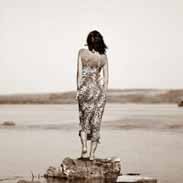AP Euro Exam Review: Art Movements – Flashcards
Unlock all answers in this set
Unlock answersquestion
Italian Renaissance, 1400s-1500s
answer
Secular in theme and focused on antiquity, individualism, humanism, and worldly experience. Subjects were often mythology, human form. Techniques included perspective, chiaroscuro, sfumato, contrapasto. Centered in Florence, and later Rome. Important artists were Michelangelo, Da Vinci, Raphael, Titian, Brunelleschi. Medicis were most important patrons.
question
Northern Renaissance, 1400s-1500s
answer
Less secular in theme and focused on salvation and religious piety. More detail throughout paintings (especially the background) than the Italian Renaissance. Use of oil paints in contrast to Italian Renaissance that used tempera. More emotional and works often preoccupied with death. Prevalent in Low Countries (Flanders) and Germany. Important artists were Jan Van Eyck, Bosch, Brueghel, Durer, Holbein. Fuggers were most important patrons.
question
Baroque, 1545-1715
answer
Reflected the ideals of the Catholic Reformation and the grandeur of absolutism. Expressed in a concrete and emotional way the glory and power of the Church. Sought to overwhelm the viewer and provoke an emotional response. Emphasized grandeur, emotion, movement, spaciousness, and unity surrounding a certain theme. Influential in Spain, Rome, and the Netherlands. Important artists were Caravaggio, Bernini, Velazquez, Peter Paul Rubens, Artemisia Gentileschi. Quintessential example is Versailles.
question
Rococo, 1700s
answer
Simultaneous with Baroque movement. Arose in France; spread to Austria. Popular with nobles. Characterized by extravagance, wealth, elegance, pleasantness, frivolity; contrasts emotional grandeur of Baroque. Strictly ornate. Important artists were Fragonard, Boucher, Watteau.
question
Neoclassicism, 1700s
answer
Return to classical antiquity. Characterized by formal, imperial style and imitation of Greek and Roman art. Most prevalent in France under Napoleon (think Napoleon's portraits--they called to mind the Roman empire). Jacques Louis Davis most important artist, focused on moral seriousness, honor, and patriotism.
question
Romanticism, 1780s-1848
answer
Reaction to revolutionary failures of 1848 and Enlightenment rationalism. Emotion/faith over reason, faith was a valid and important aspect of the human experience. Emphasized beauty and tempestuousness of nature. Idealized the past, especially the Medieval Period. Encouraged personal freedom and flexibility. Important artists were Delacroix, Turner, and Gericault.
question
Impressionism, 1800s
answer
Began in France. Artists sought to capture the momentary overall feeling, or impression, of light falling on a real-life scene before their eyes. Emphasized fleeting and brief moments of light and sudden movement. Characterized by short, choppy, light brushstrokes and outdoor scenes. Important artists were Monet, Renoir, Manet, and Cezanne.
question
Realism, after 1848
answer
Arose from the failed revolutions of 1848 and subsequent loss of idealism. Began in France. Held that art should depict life was it really was. Ordinary people were the subject of paintings. Artist Gustav Courbet coined the term "realism." Other important artists were Francois Millet (The Gleaners), Honore Daumier (Third-Class Carriage) Edgar Degas (Women Ironing). Édouard Manet bridged both the realist and impressionist movements, is often considered the first modern painter.
question
Post-Impressionism, late 1800s-early 1900s
answer
Sometimes called expressionism. Desired to know and depict worlds other than the visible world. Portrayed unseen, inner worlds of emotion and imagination. Sought to express a complicated psychological view of reality as well as an overwhelming emotional intensity. Fascination with form, as opposed to light. Important artists were Van Gogh, Gauguin, Cezanne, Matisse, and Picasso. Extremity of movement was non-representational art, such as that of Wassily Kandinsky.
question
Dada Art, 1915-1922
answer
Named after a nonsensical word that mirrored a post-WWI world that no longer made sense (the Age of Anxiety). Attacked all accepted standards of art and behavior, delighting in outrageous conduct. Focused on the absurd and used unconventional mediums. Popular in Switzerland, NYC, Paris, and large German cities. Important artist was Duchamp (Mona Lisa with a mustache, urinal "Fountain")
question
Cubism, early 1900s
answer
Type of Post-Impressionism characterized by complex geometry of zigzagging lines and sharply angled, overlapping planes. Often tried to portray all perspectives simultaneously, resulting in a "scrambled" look. Developed by Picasso along with Georges Braque. First cubist masterpiece was Picasso's Les Mademoiselle d'Avignon.



